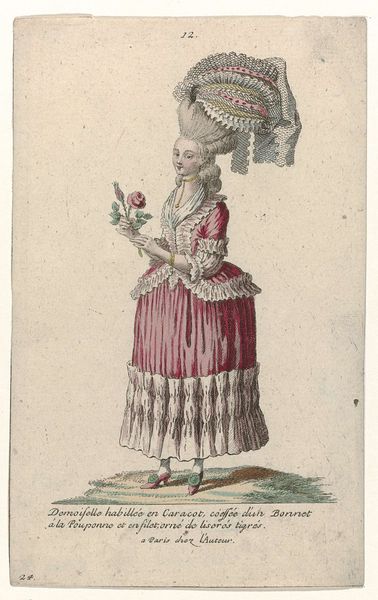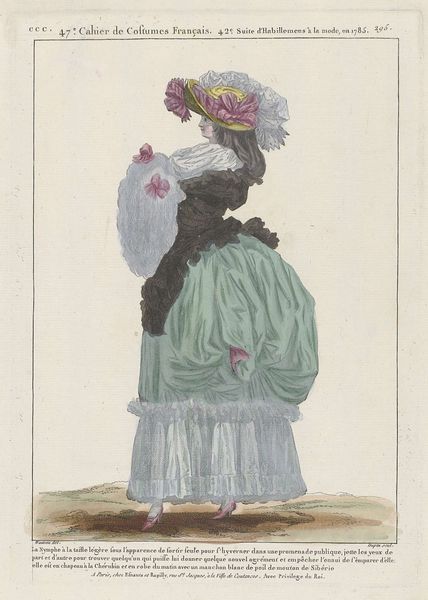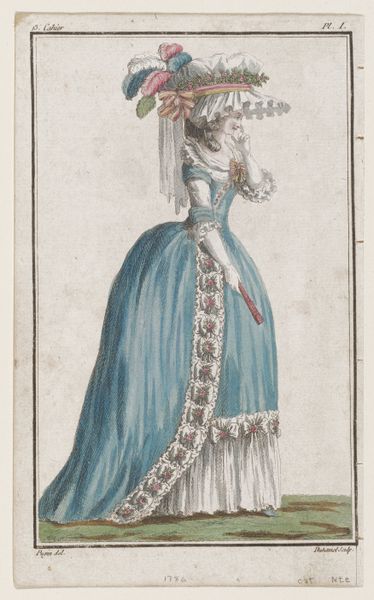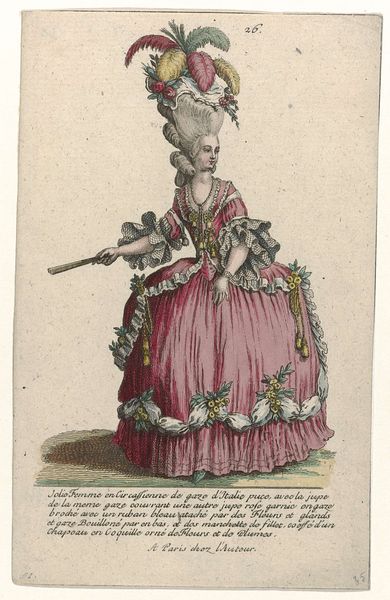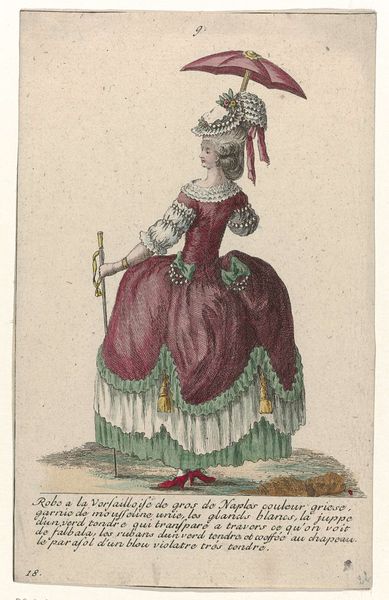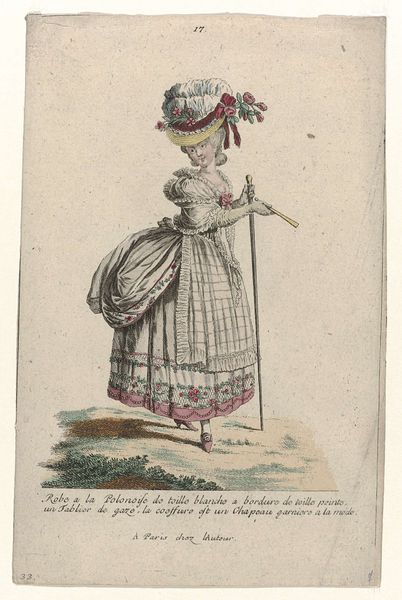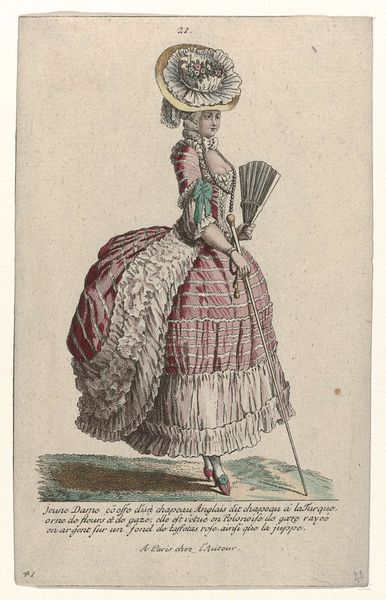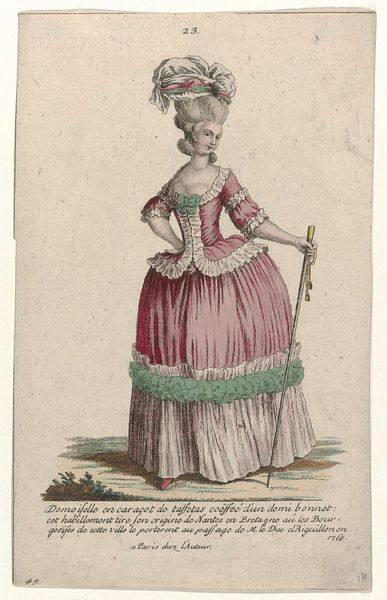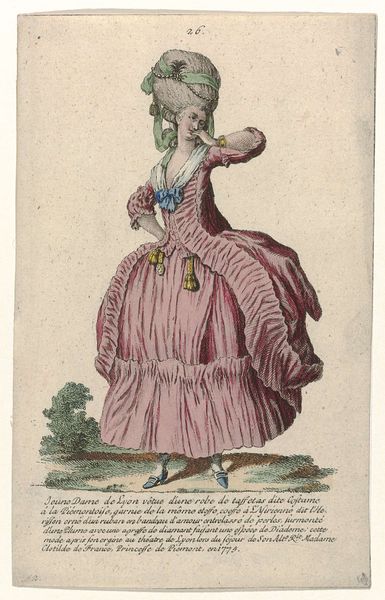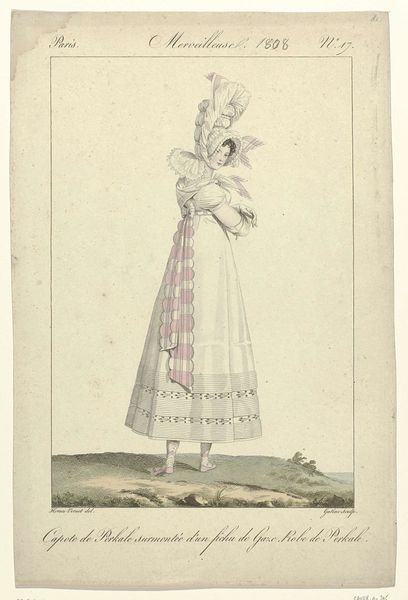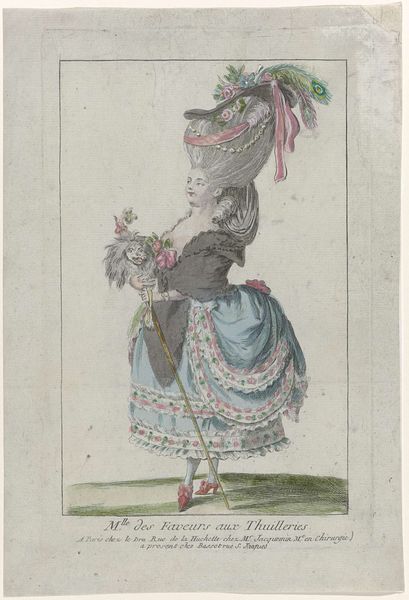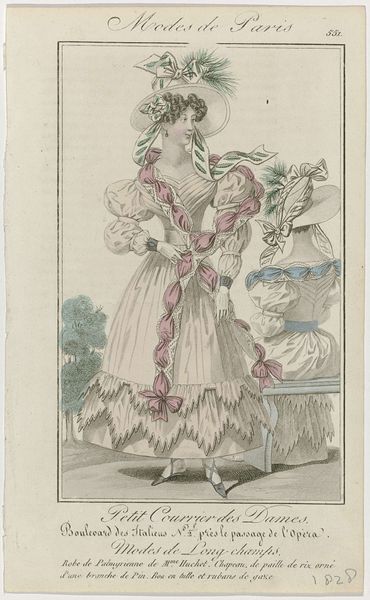
Gallerie des Modes et Costumes Français, 1778, K 59 : Demoiselle habillée en Caracot (...) c. 1778
0:00
0:00
Dimensions: height 261 mm, width 176 mm
Copyright: Rijks Museum: Open Domain
Editor: Here we have "Demoiselle habillée en Caracot," made around 1778 by Nicolas Dupin. It's a drawing rendered in ink and watercolor on paper, and the details in the clothing are incredible. The dress and elaborate hairstyle almost feel cartoonish to a modern eye. What's your interpretation of this work? Curator: I see a detailed record of the material conditions of late 18th-century French society. The focus isn’t simply on the individual, but on the construction of identity through fabric, dyes, and elaborate labor. Consider the production required for that dress; the textiles, the pattern-making, the sewing... These weren't just clothes, they were investments reflecting and reinforcing a rigid social hierarchy. Editor: So you're saying it's not just about fashion, but about the economics behind it? Curator: Precisely. Who had access to these materials and this level of craft? Who *made* the materials, and under what conditions? Look closely at the details –the paper, the ink, the pigments. All required specific skills and resources to produce, pointing to a complex network of production and consumption. Editor: It's amazing to think about all that labor just to create an image *of* luxury. Curator: Absolutely. These "Gallerie des Modes" weren’t just passively documenting fashion. They actively shaped desire and fueled consumerism, further driving the cycles of production and labor that sustained the elite. Think of this drawing as a blueprint for maintaining the status quo through material excess. Editor: I never thought about fashion plates as also documenting the process of material production. Thanks to this new perspective, I’ll never look at Rococo the same way! Curator: And I'll be sure to closely examine other designs!
Comments
No comments
Be the first to comment and join the conversation on the ultimate creative platform.
